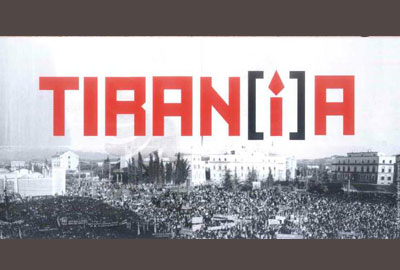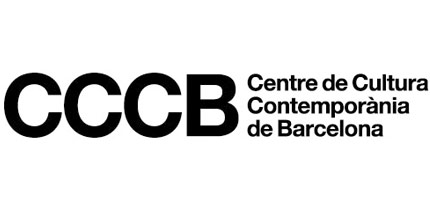Exhibition
Tiran(i)a
From 1945, the Stalinist dictator Enver Hoxha dominated Albania with his bloody and paranoid rule, bringing about the country's total isolation from the rest of the world.
An equation of words combining Tirana, the capital of Albania, and Tyranny, the power of a single person exercised with a view to oppression, forms the title in Catalan of this exhibition, Tiran(i)a (Tirana/Tyranny), an exhibition which takes as its point of departure the viewpoint of the Albanian writer Bashkim Shehu, exiled to Barcelona in 1997.Using architectural references (symbolic constructions of the architecture of power), audiovisual montages, paintings and sculptures of socialist realism, statues of Communist leaders removed from public squares, books and photographs, Shehu dissects the tyranny exercised by Hoxha and turns it into a metaphor. In this way, the exhibition extrapolates the case of Albania (1944-1990) to many others which have been experienced in the course of contemporary history.
Curators: Bashkim Shehu
The layout of the exhibition takes in the following sections:
1.- Skanderbeg Square, the centre of Tirana, not just by reason of urban planning, but also as the setting for various of the historical events of greatest importance for the country. The occupation of this square (by the Fascists, the Nazis, the Communists...) symbolises the possession of power. A documentary space which takes us around the old and modern history of Albania.
2.- The Captive Soul, a section which represents the tendency of totalitarianism to impose control over the spiritual life of the people. It is represented by a library containing the books banned by Hoxha, all marked with an R, including a bibliography of Cervantes, the books of Ernest Hemingway, Rafael Alberti and Jean-Paul Sartre, and the works of Plato, Aristotle and Hegel. It also includes the books from the dictator's own library, many of which were banned to the Albanian people, and, finally, the books written by Hoxha himself.
3.- The New Man, as a description of the type of "monster" that Hoxha's dictatorship (like other totalitarian regimes) tried to produce: strong and unfeeling with a single objective: the triumph of the cause, the triumph of the "Leader". Along with other documents and exhibits, this section displays a never-before presented collection of sculptures and paintings from the Museum of Tirana, belonging to the aesthetic movement of socialist realism.
4.- The Morphology of Power is evoked by "the pyramid", a figure which has an obvious relationship with the power structure, at the same time representing a type of economy which, in the post-Communist period, led the country to ruin, and "the bunker" as both reality and symbol of the regime's defensive delirium. Hoxha actually had 200,000 bunkers built for a population of 2,000,000 inhabitants (a total of 700,000 was planned). Today, most of these constructions have been overgrown or are used for other functions (restaurants, artists' studios, make-shift homes...), but they still remain as a symbol of the country's self-isolation brought about by Hoxha's regime.
Over the mausoleums of pyramids, in the bunkers which now form part of the landscape and in the rehabilitated streets stands the Tirana of today. The least known, most exciting city which this exhibition takes as a paradigm of our times.

